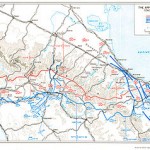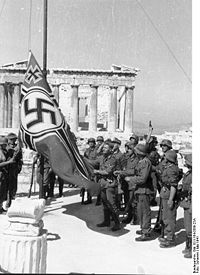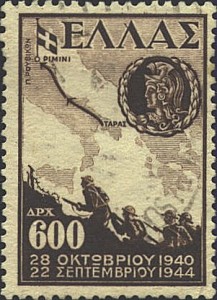The battle for Rimini, one of the most forgotten but crucial moments of World War II – Lieutenant-General Sir Oliver William Hargreaves Leese described it as paragonable to the battle of El Alamein – started on the 25th of August 1944 and culminated with a victory for the allied troops and anti-fascist partisans, and the liberation of Rimini on the 21st of September.

The Battle for Rimini, also known as Operation Olive
It was a battle that saw the largest deployment of men and materials Italy had ever seen, with up to 1,200,000 troops involved. By its end much of Rimini had been destroyed by heavy allied bombing (the bombing of Rimini started in November 1943, and by its end in September 1944 up to 607 civilians had been killed, and over 900 buildings destroyed), but with the victory the allies won a decisive break in the infamous Gothic line which the Nazis had strung across central Italy bogging down the Allied 8th Army.
There are hundreds of important and interesting stories surrounding the liberation of Rimini, but one of the most interesting and controversial relates to the official liberators – the Greek 3rd Mountain Brigade, which operated under the aegis of the New Zealand Army during the advance.
After heavy fighting and infamous battles which left hundreds of allied troops dead at Coriano and Gemmano, troops from the Royal Canadian Regiment had managed to advance and take, after very heavy fighting Rimini airport. They pushed forward and, again after heavy combat, managed to win the battle at San Fortunato ridge, allowing a rapid breakthrough whereby a small group of Canadian troops led by Captain J.Milton Gregg came to the edges of Rimini city itself (they were unexpectedly far ahead, to the point where they had to lay out white sheets on the ground to spell ‘Canadians’, in order to avoid being bombed by their own planes).
Gregg’s troops did a quick surveillance and realised that, on the dawn of the 20th, the city could be taken almost as an afterthought. Nazi troops were few and far between, setting up strategic demolitions as the main forces fell back attempting to re-establish a defensive line further North of the city. They radioed in this news, and were astonished to be told to fall back – that on no account were Canadian troops to ‘take’ the city of Rimini. That honour would fall to the 3rd Greek Mountain Brigade which was, at this point, some way behind the Canadians.
And so there was a slight delay in pressing home the advantage. Why?
It appears, according to a number of historians – including Robin Langford Kay, that a political decision was made to grant the victory to the Greeks, to encourage morale and to allow them to avenge a serious insult caused when Athens fell to the axis forces in 1941.

German troops unfurl the Swastika on the Acropolis - the Italian flag was also apparently flown.
In 1940 Mussolini’s Italian army had invaded Greece, but was pushed back by Greek resistance, forcing Hitler to divert troops and energy from the planned build of ‘Operation Barbarossa’ in order to intervene and save the invasion. After a month’s fighting Greece came firmly under the control of the German-Italian-Bulgarian invasion force.
In Athens, the Greek flag was removed from the Acropolis, replaced by the Swastika – an affront which led to one of the most symbolic acts of the Greek resistance, when EvzoneKonstandinos Koukidis wrapped himself in the retired Greek flag and threw himself off the famous mountain monument. Almost as offensive to the Greeks was the flying of the Italian flag in the occupied city, given that the Italians had actually been defeated by the Greek army prior to the German-Bulgarian intervention.
It was against this backdrop that the Greek comander Colonel Thrassivoulos Tsakalotos appealed to allied command, at the end of August 1944, to be allowed to march his troops through Rome. Rome was a touchy subject, having already been the subject of serious argument amongst the British, Americans and French (with the American General Mark Clark being the eventual winner of the ‘Race to Rome’). It was, thus, always unlikely that the Greeks would be granted the supreme privilege of parading as victors through Rome.
On the other hand Allied commanders were keen to bolster Greek morale. Churchill and co. were already hugely pre-occupied by the Soviet advances towards Eastern Europe and the Balkans, and wished to avoid offending any potential allies for the post war period. The answer to their dilemma, then, was Rimini.

A Greek stamp commemorating their military campaign along Italy's Adriatic coast, culminating with the liberation of Rimini
The city had a rich symbolic significance – it was after all the city, after Rome, perhaps most connected with Italy’s most famous military leader Julius Caesar. It was also still the gateway to the Po valley, as the Allied decision to push forward here showed.
So, on the morning of the 21st of September 1944, the Greek 3rd Mountain Brigade, accompanied by liason officers from the New Zealand Army, joined by local Partisan forces, marched through the famous – and thankfully still intact Arco di Augusto – and onwards to Piazza Cavour where they officially accepted the surrender of the city, and flew the Greek flag.